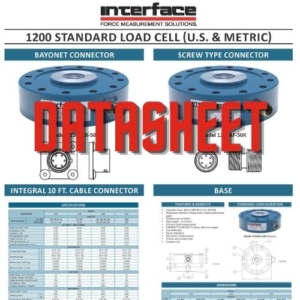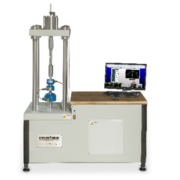I’ve Got a Load Cell – Now What? Episodes 3 and 4
Continuing our review of the popular webinar series, I’ve Got a Load Cell – Now What?, we are detailing the third and fourth episodes. The focus of these two installments is documentation that you should expect with every load cell and the fundamentals of load cell output.
Digging into documentation is an important subject for anyone that is buying or using load cells for test and measurement. It is also a differentiator in the quality and type of manufacturer that makes your device. The details provided in load cell documentation validates the characteristics and performance, as well as experience and craftmanship used in the engineering and construction of your load cell.
When quality and accuracy matters, documentation and certification are critical verification evidence.
Load Cell Documentation: Datasheets and Calibration Certificates
Interface provides detailed datasheets for every load cell model number. On the top of the datasheet, the Interface model number precedes the description of the load cell’s primary characteristics, such as 1200 Standard Load Cell. The Interface Calibration Certification accompanies every sensor device we manufacturer and ship from our U.S. headquarters, confirming the final condition prior to release. Interface calibrates every load cell we make before it leaves our facilities as part of our performance guarantee.
 INTERFACE DATASHEET FUNDAMENTALS
INTERFACE DATASHEET FUNDAMENTALS
- Features and Benefits
- Standard Configuration and Drawings
- Dimensions
- Specification Parameters Based on Model and Capacity
- Detailed Measurement and Performance Data for Accuracy, Temperature, Electrical and Mechanical
- Options
- Connection Options
- Accessories
Special note for datasheet reviews, the models that use the same form factor are often on the same datasheet with varying capacity measuring ranges in U.S. (lbf) and Metric (kN) information. All Interface datasheets are available for review and download for every product we offer, including load cells, torque transducers, multi-axis sensors, mini load cells, load pins and load shackles, instrumentation and accessories.
INTERFACE CALIBRATION CERTIFICATES DETAILSIQ
- Model Number
- Serial Number
- Bridge and Capacity
- Procedures
- Input and Output Resistance
- Zero Balance
- Test Conditions: Temperature, Humidity and Excitation
- Traceability
- Shunt Calibration
- Performance Test Data of Test Load Applied and Recorded Readings
- Authorized Approval
The performance information detailed on the certificate is important for how it was calibrated, how it performed at release, system health checks and troubleshooting. Watch the episode #3 of I’ve Got a Load Cell – Now What? for additional information about datasheets and cal certs.
Fundamentals of Load Cell Output
Load cells are used in one of two ways, either universal (bipolar) or single mode (unipolar). Bipolar is for measuring tension and compression. Unipolar is for measuring either tension or compression. This use type will dictate what output you will get from the load cell. Most Interface load cells are a tension upscale device, which means you will get a positive output when it is placed in tension.
Standard load cells are usually unamplified mV/V ratio metric output. Interface does offer amplification signals for our load cells, which is a common request when pairing with a data acquisition system. In episode #4 of I’ve Got A Load Cell – Now What?, Elliot provides an example of mV/V ratio metric when using a 5000 lbf LowProfile Load Cell with our 9840 Instrumentation.
For questions about datasheets, calibration certifications or performance and capacities, please contact our application engineers.
ADDITIONAL RESOURCES
Interface 1200 Precision LowProfile Load Cell Series Product Highlight
Load Cell Basics Technical Q&A Part One
Load Cell Basics Technical Q&A Part Two
Understanding Load Cell Temperature Compensation
Load Cell Basics Sensor Specifications









